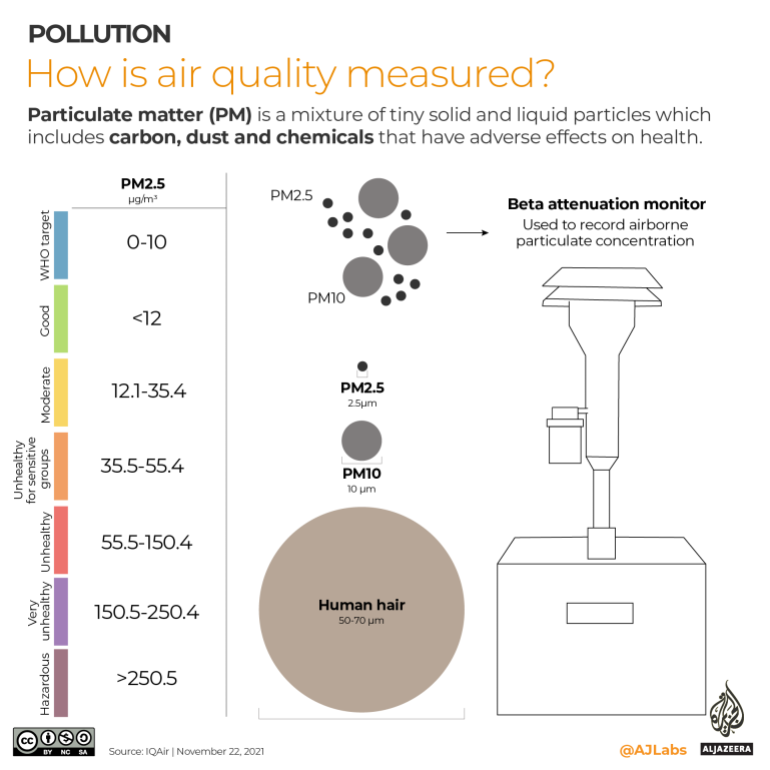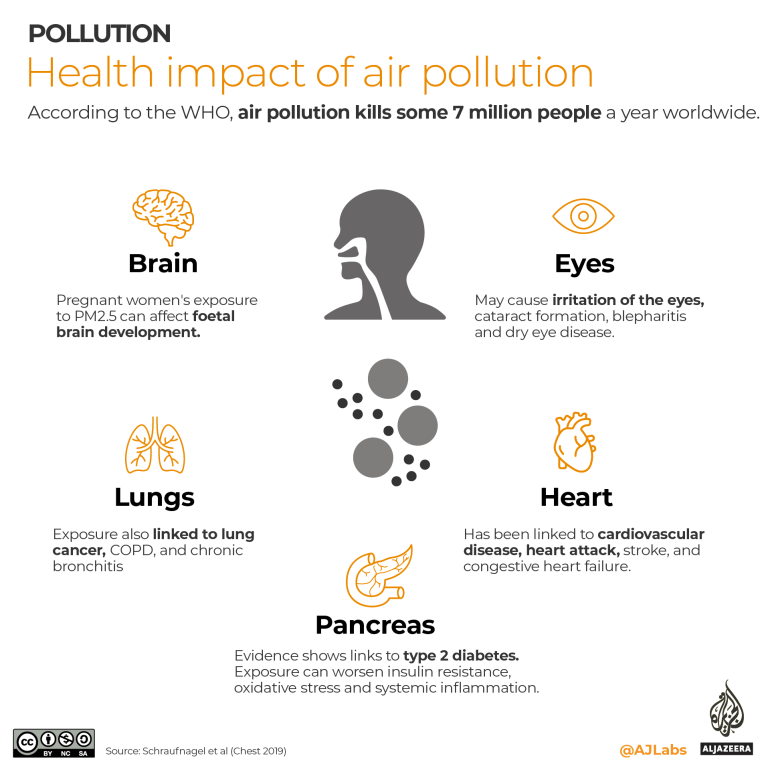Canada wildfires: What to do when the air quality is bad outside
Haze has settled over large swaths of North America from fires, an issue expected to continue into hottest months.

A smokey haze from Canada’s worst-ever early wildfire season is expected to be a regular occurrence across some regions of North America as the hottest months of the year approach.
On Friday, about half of the United States population was under some form of air quality warning – either due to the northern blazes or to a relentless heat wave in the south.
Keep reading
list of 3 itemsCanada’s record wildfires should be ‘wake-up call’, experts warn
Canada wildfires are affecting millions: Here’s how to stay safe
Across the US Midwest and East, about 100 million Americans faced another day of smoky skies.
Air quality considered “unhealthy” stretched from Quebec province in Canada to the US state of Michigan in the west, Connecticut in the east, and Virginia to the south, according to a real-time map maintained by the US Environmental Protection Agency.
While conditions were improving slightly, the latest run of poor air was expected to continue into next week, when the US celebrates its independence day.
Here are tips to staying safe when the quality of air outside is bad:
Stay up to date on local air quality
Knowing the conditions in your area is the first step.
In the US, the EPA maintains a real-time air quality index, and air quality tracking applications are also available.
The EPA index combines measurements of ground-level ozone and fine particle pollution.
The agency defines ground-level ozone as the smog caused by the reaction of sunlight and “pollutants emitted by cars, power plants, industrial boilers, refineries, chemical plants” and other sources.

More relevent to the Canadian fires is fine particle pollution, which are tiny particles that can get deep into the lungs. “Good” to “moderate” air quality tends to have a 24-hour average of less than 35 micrograms per cubic metre of air of fine particle pollution.
Combining Ozone and fine particle pollution, the EPA index runs from 0 to 500. Anything more than 150 is considered unhealthy to the general public. Anything more than 300 is considered “Hazardous”.
What can poor air quality do to the human body?
The particles in smoke from wildfires can irritate your eyes and respiratory system, causing a range of issues including a burning sensation, a runny nose and bronchitis – a lung infection.
Most at risk are people with chronic diseases, including “congestive heart failure, angina, chronic obstructive pulmonary disease, emphysema or asthma”, according to the EPA.
A 2020 study by the University of British Columbia also showed people with diabetes had an increased likelihood of complications within just 48 hours of wildfire exposure.
Children, whose respiratory systems are still developing and who breathe more air per pound than adults, are at heightened risk, as are older adults.
How to best protect yourself
Poor air quality is a pervasive problem, but experts have recommended some ways to mitigate the adverse health effects.
Most broadly, health agencies recommend staying inside as much as possible and closing windows. Using air conditioning that circulates air is also recommended.
Experts also recommended prioritising buying an air purifier with a high-quality filter to have on hand before conditions worsen.

If you go outside, experts generally recommend edavoiding strenuous activity and wearing a mask. N95 masks or respirators are recommended to prevent inhaling tiny particles.
People in sensitive groups are also encouraged to closely monitor for symptoms including cough, shortness of breath, chest pain or weakness, and to stay in contact with their doctor.